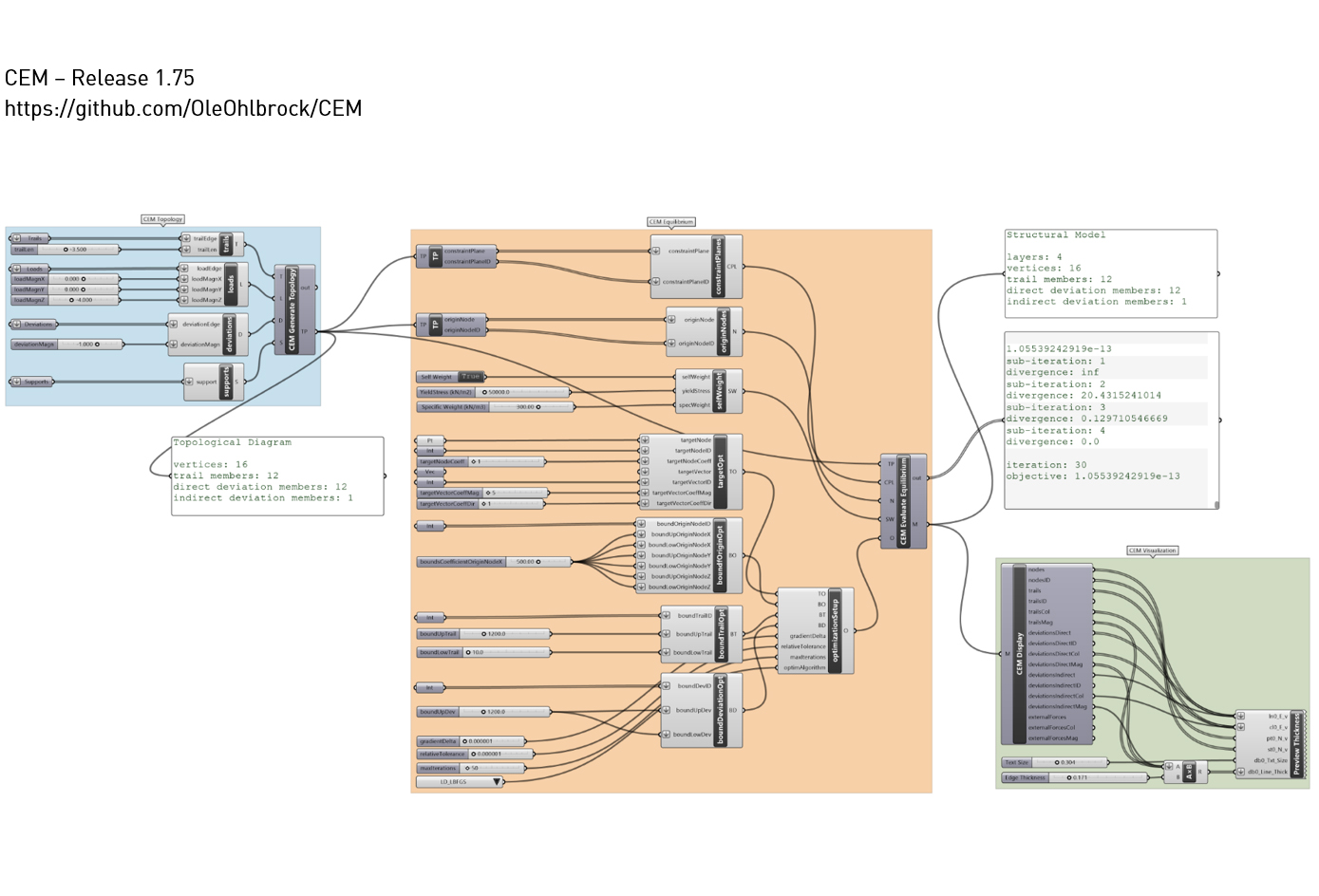Combinatorial Equilibrium Modelling (CEM) Tool
2017 -
The Combinatorial Equilibrium Modelling (CEM) is a form-finding tool for structural design based on 3D graphic statics and graph theory that
allows for the interactive generation of mixed tension-compression equilibrium shapes. The CEM is intended to support the conceptual design of structures in static equilibrium across different non-typological design spaces. Thanks to its intuitiveness, the tool targets both structural engineers and architects, thus contributing to the development of designs in which engineering thinking and freedom of architectural expression are seamlessly combined.Contrary
to other existing form-finding tools, in the CEM, the design parameters are expressed and controlled in absolute units (lengths and force
magnitudes), and the static equilibrium is not the result of an optimisation process, but it is fulfilled a priori.
The CEM has been implemented as an open-source, platform-independent Python code, and as a plug-in for the commercial CAD software McNeel Rhinoceros and Grasshopper. The plug-in includes three sub-components (CEM-Topology, CEM-Equilibrium, and CEM-Visualization). The tool is avaliable as an open source code on GitHub.
Research Team:
Patrick Ole Ohlbrock, Pierluigi D′Acunto (ETH Zurich)
Related Publications:
Ohlbrock Patrick Ole, D'Acunto Pierluigi: A Computer-aided Approach to Equilibrium Design based on Graphic Statics and Combinatorial Variations, Computer-Aided Design. Under Review.
Patrick Ole Ohlbrock, Joseph Schwartz: Combinatorial Equilibrium Modeling, International Journal of Space Structures, SAGE Publishing, August 2016.
last modified 23.9.2019
